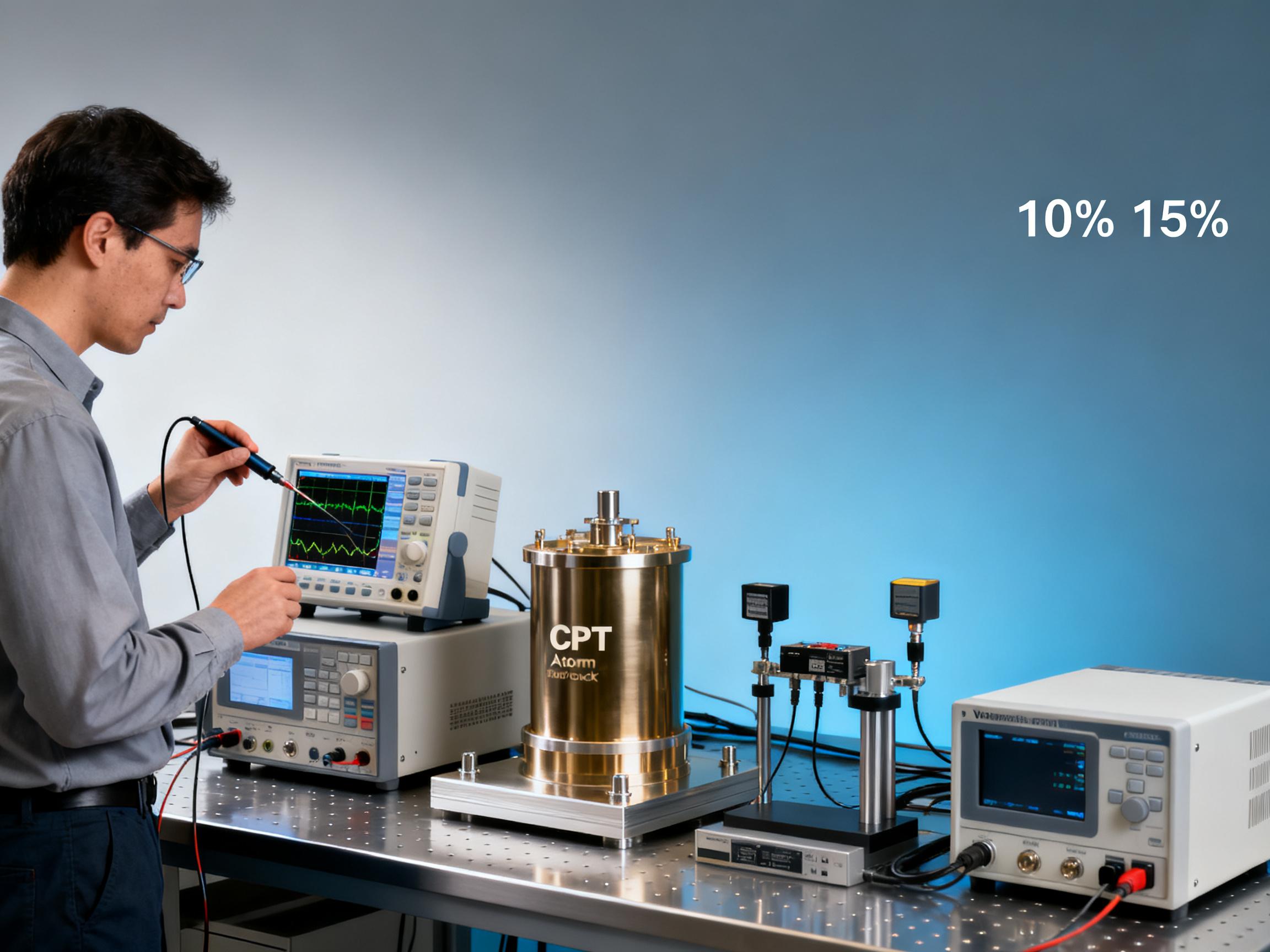RELATED
![How CPT Atomic Clocks Reduce OPEX in 5G Base Stations [Real Data] How CPT Atomic Clocks Reduce OPEX in 5G Base Stations [Real Data]](https://usimg.bjyyb.net/grey.png?x-oss-process=image/resize,m_fixed,w_800,h_600,limit_0) How CPT Atomic Clocks Reduce OPEX in 5G Base Stations [Real Data]2025-12-11
How CPT Atomic Clocks Reduce OPEX in 5G Base Stations [Real Data]2025-12-11 2024 CPT Atomic Clock vs Rubidium: Which Offers Better Stability for Telecom Networks?2025-12-08
2024 CPT Atomic Clock vs Rubidium: Which Offers Better Stability for Telecom Networks?2025-12-08 Live Demo Results: CPT Atomic Clock Performance Under Harsh Environmental Tests (Data Inside)2025-12-05
Live Demo Results: CPT Atomic Clock Performance Under Harsh Environmental Tests (Data Inside)2025-12-05 Budgeting for Precision: Total Cost of Ownership for a Rubidium Atomic Clock Over 5 Years2025-12-03
Budgeting for Precision: Total Cost of Ownership for a Rubidium Atomic Clock Over 5 Years2025-12-03
MESSAGE
As facilities weigh options for timing infrastructure, choosing between a cpt atomic clock and a Rubidium atomic clock requires balancing accuracy, stability, size, power consumption, maintenance and lifecycle cost. This guide helps information researchers, operators, technical evaluators and decision-makers cut through specifications with practical comparisons, deployment considerations and performance expectations from a provider rooted in high-precision time and frequency solutions. Leveraging SPACEON-backed expertise, we focus on real-world selection criteria—environmental resilience, calibration needs and total cost of ownership—to help you select the best clock for your facility’s operational and contractual requirements.
Definition and practical explanation: what a CPT atomic clock and a Rubidium atomic clock actually deliver
A clear, practical definition helps procurement teams and technical evaluators frame requirements. A cpt atomic clock (coherent population trapping atomic clock) uses a compact optical or microwave CPT resonance in alkali atoms (commonly cesium or rubidium vapor) to generate a narrow atomic reference without requiring a bulky microwave cavity. CPT technology emphasizes low size, weight and power (SWaP) and often integrates semiconductor lasers, intensity/phase modulation and miniature vapor cells. A Rubidium atomic clock, in contrast, typically refers to a traditional rubidium frequency standard that uses a gas cell and a microwave discharge lamp or optically pumped scheme to stabilize an oscillator to the rubidium hyperfine transition. Both aim to provide a stable frequency and accurate timebase, but their architectures and trade-offs differ in measurable ways.
For information researchers and decision-makers, the salient technical distinctions are straightforward. The cpt atomic clock tends to offer better integration potential with optical and photonic systems and lower power consumption in many modern designs, making it attractive for edge installations, network synchronization nodes and portable timing platforms. The Rubidium atomic clock remains a proven industrial workhorse known for long-term operational robustness, widespread diagnostic tooling and well-understood aging behavior. For operators and contract executors, reliability, mean time between failures (MTBF), and field servicing play as large a role as raw accuracy.
When discussing performance in operational language, emphasize what matters to users: holdover capability during GNSS denial, short-term phase noise for synchronization, and calibration cadence for contractual SLAs. Both the cpt atomic clock and Rubidium atomic clock can be GNSS-disciplined; however, some CPT designs can provide improved warm start and power-efficient holdover. Technical evaluators should request datasheets that present Allan deviation curves, phase noise plots and environmental test results (temperature, vibration, shock). Referencing international measurement standards such as IEEE 1139 (time and frequency definitions) and IEEE 1057 (clock measurement) can help quantify vendor claims and align evaluations with industry-accepted metrics.
Direct comparison and technical performance table: objective metrics for procurement and operations
Procurement teams and technical evaluators benefit from a side-by-side view. Below we summarize typical ranges and considerations; note that actual device data may vary by model and manufacturer. Use this table when drafting technical requirements or requests for proposal (RFPs) to ensure vendors supply consistent, comparable metrics. Mention of both the cpt atomic clock and Rubidium atomic clock appears throughout the table to keep keyword relevance high and searchable for stakeholders seeking vendor-neutral comparisons.
Use these figures as a starting point. For sensitive applications—high-frequency trading, telecom core synchronization, or scientific experiments—ask vendors for measured phase noise plots and environmental test reports. SPACEON-backed systems often deliver detailed test data, demonstrating how a cpt atomic clock can match or surpass legacy Rubidium atomic clock performance in energy-limited or distributed scenarios, while Rubidium products still demonstrate excellent lifecycle predictability in centralized deployments.
Deployment guidance, maintenance, standards and procurement checklist
Operational success depends on matching the device to your specific environmental and contractual constraints. Below are practical steps and checklist items tailored to information researchers, on-site operators and contract executors evaluating either a cpt atomic clock or a Rubidium atomic clock. Start by defining measurable SLAs: required holdover duration, maximum allowable drift per 24 hours, warm-up time, and acceptable calibration cadence. Include environmental specs in RFPs—operational temperature range, vibration tolerance, and humidity limits. For many facilities, the reduced power profile of a cpt atomic clock minimizes cooling needs and supports UPS-backed deployments with longer autonomous operation compared to some Rubidium setups.
- Calibration and verification: Require initial factory calibration certificates and specify periodic on-site verification intervals. Ask for Allan deviation test reports and traceability to national standards (e.g., NPL, NIST).
- Maintenance and spare parts: Clarify MTBF expectations and availability of field-replaceable modules. A Rubidium atomic clock may have more legacy spare parts availability; however, modern cpt atomic clock manufacturers increasingly maintain global support networks.
- Integration & monitoring: Ensure SNMP/REST or standard telemetry interfaces for remote health monitoring. Operations teams should be able to monitor frequency offset, lock status, and environmental sensors in real time.
- Compliance & certification: Reference relevant standards such as ITU-T G.811/G.812 for telecom timing and IEEE time/frequency measurement practices. For mission-critical installations, request EMC and safety certificates.
For contract execution, include acceptance tests that replicate on-site conditions: temperature cycling, GNSS removal (holdover test), and warm start. For many enterprises, lifecycle cost matters more than initial price: calculate total cost of ownership including power over five years, expected calibration service fees, and potential costs of failure during GNSS outages. SPACEON’s solutions and service agreements can be aligned to contractual SLAs, offering calibration traceability and rapid field support to reduce operational risk.
Cost, industry trends, case studies, common misconceptions and FAQ with next steps
Cost considerations should balance acquisition price against operational expenditure. Historically, Rubidium atomic clock hardware had economies of scale and therefore attractive price points for baseline accuracy. Recent advances in cpt atomic clock technology—fueled by photonics and miniaturization—are narrowing the gap or even delivering lower total cost of ownership in distributed deployments, primarily through reduced power consumption and simplified thermal management. Trend-wise, demand for low-SWaP, GNSS-independent holdover, and edge synchronization is driving adoption of CPT-based modules in telecom and power applications, while Rubidium atomic clock platforms remain common in core network and laboratory contexts.
Common misconceptions surface during procurement discussions. One frequent belief is that a Rubidium atomic clock is always more accurate; this is not universally true today. Some modern cpt atomic clock designs rival or exceed legacy Rubidium short-term stability while offering better SWaP. Another misconception is that CPT systems are unproven. On the contrary, certified CPT modules have passed environmental and stability tests consistent with industry standards. Always verify claims with measurement data and ask vendors for real-world deployment references. Below are concise FAQs tailored to technical evaluators and operators:
- Q: Which clock needs less frequent calibration? A: It depends on the model and operating environment. Many Rubidium atomic clock installations have predictable aging curves; some CPT designs compensate aging electronically, extending calibration intervals.
- Q: Can either be used as GNSS backup? A: Yes—both a cpt atomic clock and Rubidium atomic clock can serve as GNSS-disciplined or GNSS backup devices. Ensure holdover metrics meet your outage tolerance.
- Q: Which offers lower power consumption? A: Typically, modern CPT modules are optimized for low power, though some Rubidium units designed for efficiency may be comparable.
- Q: How to validate vendor claims? A: Request Allan deviation plots, phase noise spectra, environmental test reports and references. Require traceability to national time standards.
Case in point: a telecommunications operator replaced several legacy Rubidium atomic clock nodes with compact cpt atomic clock modules to reduce site power draws and simplify deployment on rooftop shelters. The result: comparable synchronization quality, extended battery-backed holdover, and measurable OPEX savings. Another customer in power distribution retained Rubidium atomic clock units at central substations for their proven long-term predictability while deploying CPT-based nodes for distribution-level synchronization.
Why choose us? SPACEON-backed solutions combine international R&D pedigree with practical field experience. We provide test data, certification support and flexible service contracts aligned to your SLA needs. Contact us to request tailored comparatives, vendor-neutral validation protocols, or a site-level RFP template that incorporates requirements for a cpt atomic clock and Rubidium atomic clock. Our team can help you run acceptance tests, interpret Allan deviation figures, and plan a phased rollout that minimizes operational risk and lifecycle costs.
Contact: For technical datasheets, on-site evaluation support or customized procurement templates, reach out to our specialists. We support information researchers, operators, technical evaluators and decision-makers with actionable guidance rooted in high-precision time and frequency expertise.
CONTACT US
Please use the form below to get in touch.
If you need a reply we will get in touch as soon as possible.

![How CPT Atomic Clocks Reduce OPEX in 5G Base Stations [Real Data] How CPT Atomic Clocks Reduce OPEX in 5G Base Stations [Real Data]](https://usimg.bjyyb.net/sites/91500/91958/1765179857856560163985903616.jpeg)



